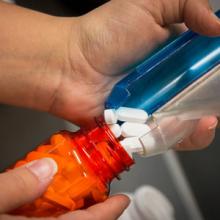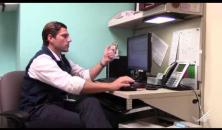Why is it important to rethink the role of the clinical pharmacist?
Clinical pharmacists have unique expertise in medication dosing, side effects, and efficacy. Conservative estimates of medication errors and adverse drug events in ambulatory care found an annual rate of more than half a million adverse drug events, with an annual cost of almost $900 million. Team-based care that includes a clinical pharmacist is one way to help prevent some of these adverse drug events. In addition, when clinical pharmacists are active members of the care team, they enhance efficiency by:
- Providing critical input on medication use and dosing.
- Working with patients to solve problems with their medications and improve adherence.
- Consulting with primary care team members about medication-related issues.
- Assisting with onboarding of new patients by reviewing medications and aligning treatment options to medication prescribing patterns of the new organization and primary care provider.
- Reviewing and providing assistance with patients on multiple medications (polypharmacy) to help to simplify medication regimens.
Reviewing high-risk medication profiles, including review of patients on high-dose opioids or opioids with other high-risk medications (e.g., benzodiazepines)
How should the role of the clinical pharmacist change?
Many clinical pharmacists are part of a centralized service that clinical staff can access for problematic patients or consult as needed. In contrast, clinical pharmacists at many LEAP sites actively work with patients as an integral part of the primary care team, doing tasks such as:
- Participating in team huddles, panel management meetings, and other meetings that involve proactively addressing patient needs and/or problem-solving how best to meet the needs of high-risk patients.
- Being available for warm handoffs.
- Working with patients over time to problem solve medication issues and/or titrate medications.
- Using motivational interviewing to address patients concerns or resistance to taking medications.
- Conducting thorough medication reviews with patients.
- Providing alternative visit care, such as teaming with PCP in group visits and addressing medication questions that are posed by patients via email or telephone inquiries.
What do we gain by making these changes?
When a clinical pharmacist is an integral member of the primary care team, they can help relieve provider workload, increase efficiency, and help care team members stay updated on best practices. They can also enhance the overall quality of care by working directly with patients to improve:
- Medication adherence.
- Medication management.
- Medication safety and drug interaction issues.
If your practice has a clinical pharmacist, assess whether they are actively participating in team-based care and maximizing their role given scope of work guidelines and collaborative practice agreements in place.
Assess openness and build a business case, if your practice does not have a clinical pharmacist. LEAP sites have integrated clinical pharmacists in FQHCs, integrated systems, and FFS environments.
Create a job description that prioritizes integration with the primary care team and patient care. Communicate to care team members and patients about the services available from the clinical pharmacist. LEAP sites often optimize face-to-face interactions with care team members and patients, for example, by co-location of the clinical pharmacist in the team space.
Ensure that your clinical pharmacist is actively participating in team efforts to address chronic disease management and population management efforts. Pharmacists bring useful perspectives to chronic disease management huddles, care conferences, quality improvement projects, and other team-based activities focused on improving care of specific patient populations.
Provide your clinical pharmacist with training. In order to work effectively with patients, especially using motivational interviewing, pharmacists need related training.
Publications
Role featuresJob descriptions, career ladders and other HR materials
Video
ToolkitsImplementation guides and other documents with extensive resources included
Patient materialsAction plans, brochures, team cards, welcome letters
Staff trainingTutorials, training manuals, etc.
If you have a question about the improvements, action steps, or tools & resources in this module please let us know. We're here to help. And if we can't answer your question, we can probably connect you with someone who can.







